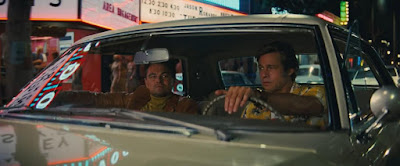Fans of The Three Stooges, Laurel and Hardy, and The Little Rascals will be pleased to know that Charley Chase is receiving his due. While not receiving commercial exposure over the past decades (unlike Little Rascals and Three Stooges which air today on MeTV every Saturday), Charley Chase remained highly sought-after by film collectors of 16mm prints throughout the 1970s. At film festivals across the country, an hour of Charley Chase comedies has become a Saturday evening tradition. The popularity of his comedic brilliance was evident a couple years ago when Sony Entertainment released two volumes containing every Charley Chase comedy produced by Columbia Pictures. Just this week I received the second and latest release from the Sprocket Vault, Charley Chase: At Hal Roach: The Talkies, Volume Two, 1932-1933.
For those not aware of Charley Chase, he starred, wrote and directed a large number of silent comedy shorts, where you can purchase a ton of those classics with Becoming Charley Chase (VCI Entertainment), Cut to the Chase (Milestone) and multiple Kino on Video DVD releases. While there are known “lost” gems (some existing partially in picture and sound), the majority of the silent classics are available through these named releases.
Chase eventually found himself employed as a contract player at Hal Roach, the same producer of Thelma Todd, Laurel and Hardy and Our Gang comedies. Chase later made the move to Columbia Pictures, who was producing the popular Three Stooges classics. It was the Hal Roach and Columbia talkies that were regarded with extreme assessment from film collectors, many courtesy of Blackhawk syndication prints. On January 1, 2013, the first of two Columbia compilations were released through Sony Entertainment, which sold so well the studio released a second volume. This led fans to ask, “where are the Hal Roach classics?”
Last year Kit Parker Films, through his Sprocket Vault label, released the first volume of Charley Chase-Hal Roach shorts, in chronological order. Just like the Columbia gems, every film short was remastered from the best available pre-print material of the Hal Roach masters, ensuring better quality than those 16mm Blackhawk prints. This was cause for celebration. Chase did so many film shorts at Hal Roach Studios that it would take three volumes to release them all and sales of the first volume would determine the release of volume two.
In the meantime, Sprocket Vault released volume one of the Thelma Todd comedy shorts, also chronological. (Oddly, volume two was released through Classic Flix DVD.) Well, sales must have been strong with Charley Chase because volume two just arrived and I am pleased to announce that the picture quality is nice and sharp, good contrast, and worth the purchase price. I found myself laughing at the jokes (both verbal and slapstick) for a couple comedy shorts I never saw before. “The Nickel Nurser” co-stars Thelma Todd, and I was surprised to discover “Luncheon at Twelve” was partially reworked by The Three Stooges as “Tassels in the Air.”
When I asked Richard M. Roberts (who provides fantastic optional audio commentary, by the way) if volume three will be released so fans can complete the Charley Chase film shorts, he explained to me: “We are not announcing future releases until they are ready to come out, and have said online that the release of future sets predicate on the sales of current released sets, Volume Two of Charley Chase came out due to sales of Volume One, so future volumes will depend on the sales of Volume Two.”
Considering Hal Roach produced other comedy shorts from The Boy Friends, The Taxi Boys and Harry Langdon, among others, the message needs to be sent to the Sprocket Vault. None of the comedy shorts have to be seen in chronological order so even if you have not yet purchased Volume One, consider buying Volume Two today to help ensure the release of Volume Three. The complete Charley Chase is almost within our grasp… one more volume to go.
You can purchase Volume Two here:
With so many DVDs of Charley Chase comedy shorts available, some with company logos watermarking the prints and a lack of concern for remastered print transfers, it is understandable that confusion can arise. For anyone who wants to know which sets are the "essentials," the remastered prints and the only ones you really need, I have included scans of all the DVD releases that, together, make up the majority of the Charley Chase comedy shorts. Hope this helps.

































